Slides are one of the most popular tools for creating and sharing online presentations. Whether you are organizing an important meeting, presenting a product, or teaching, slides will help you convey information easily and effectively.
However, relying solely on traditional slides can limit interactivity and connection with the audience. To enhance the interactivity and utility of your presentation, you can optimize the power of slides by using QR codes. In this article, we will explore how to use QR codes in slides, starting with understanding why we should use QR codes for slides.
Why Use QR Codes for Slides?
1. Creating Interaction
QR codes can break the monotony of regular presentations. By integrating QR codes into your slides, you can interact more with your audience, providing them with more engaging content.
Instead of just viewing and listening, they can actively participate and interact with your content. The flexibility of QR codes can enhance the audience's level of engagement in various ways, creating a lively and memorable experience for attendees.
This applies specifically in many real-life situations. Imagine your audience simply raising their phones, scanning the QR code on your slide, and instantly participating in a mini-game on Kahoot or any other platform to make the program more enjoyable and dynamic. Or simply scanning the QR code to leave comments/feedback or connect with you on social media. Isn't that fantastic?
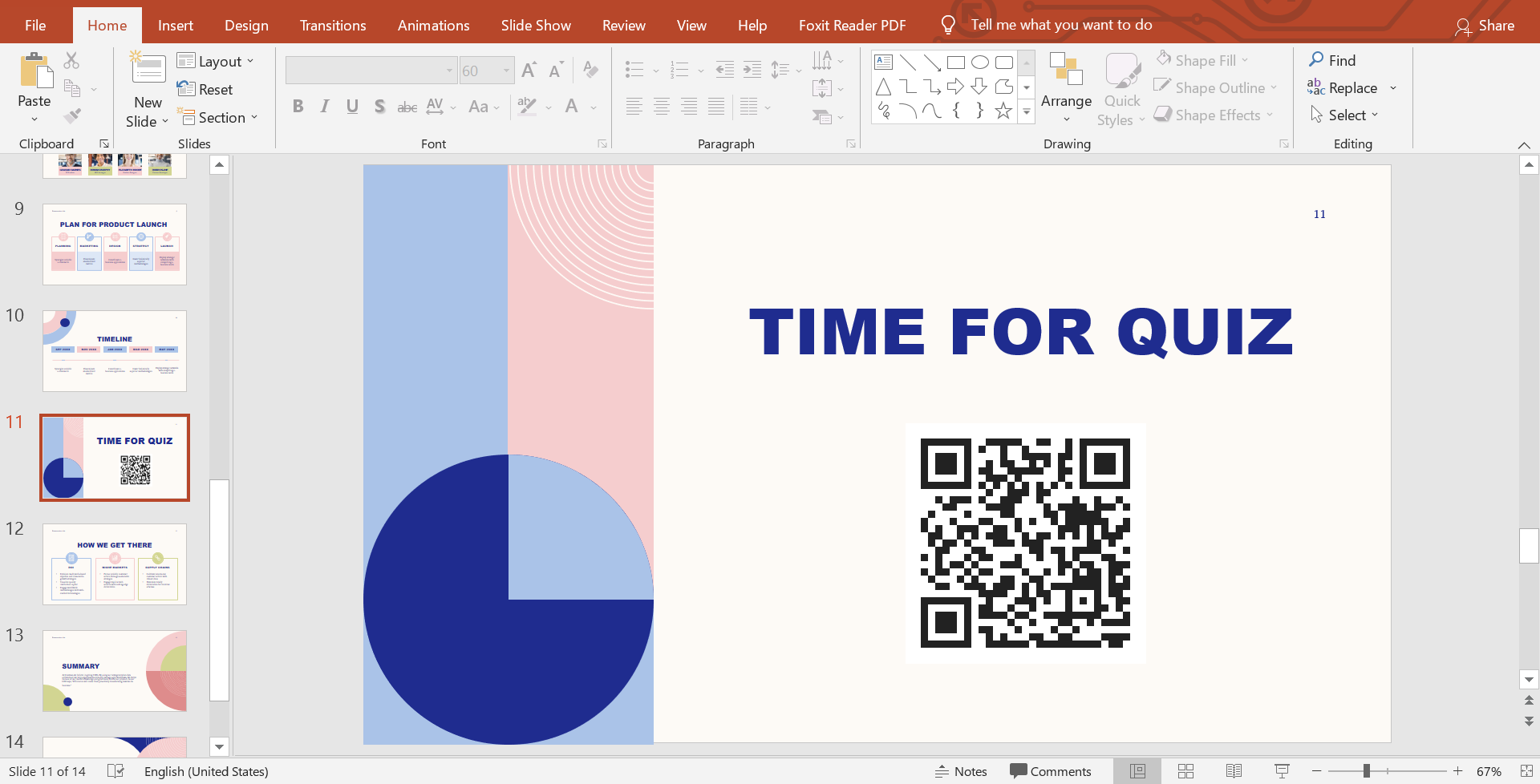
2. Quick Access
By adding QR codes to your slides, your audience can instantly access a copy of the slide or any attached documents, websites, videos, or links without having to wait for you to share the links on social media after the event.
QR codes help you save significant time during your presentation or teaching session. Instead of spending time writing or entering long and complex URLs, you only need to display the QR code on the slide and use it for multiple occasions.
This allows you to focus more flexibly on presenting your core content. There's no longer any hindrance from typing, copying, or pasting links, and your viewers don't waste too much time accessing the necessary information. Instead, they simply need to scan the QR code to quickly and easily access all the information they need.
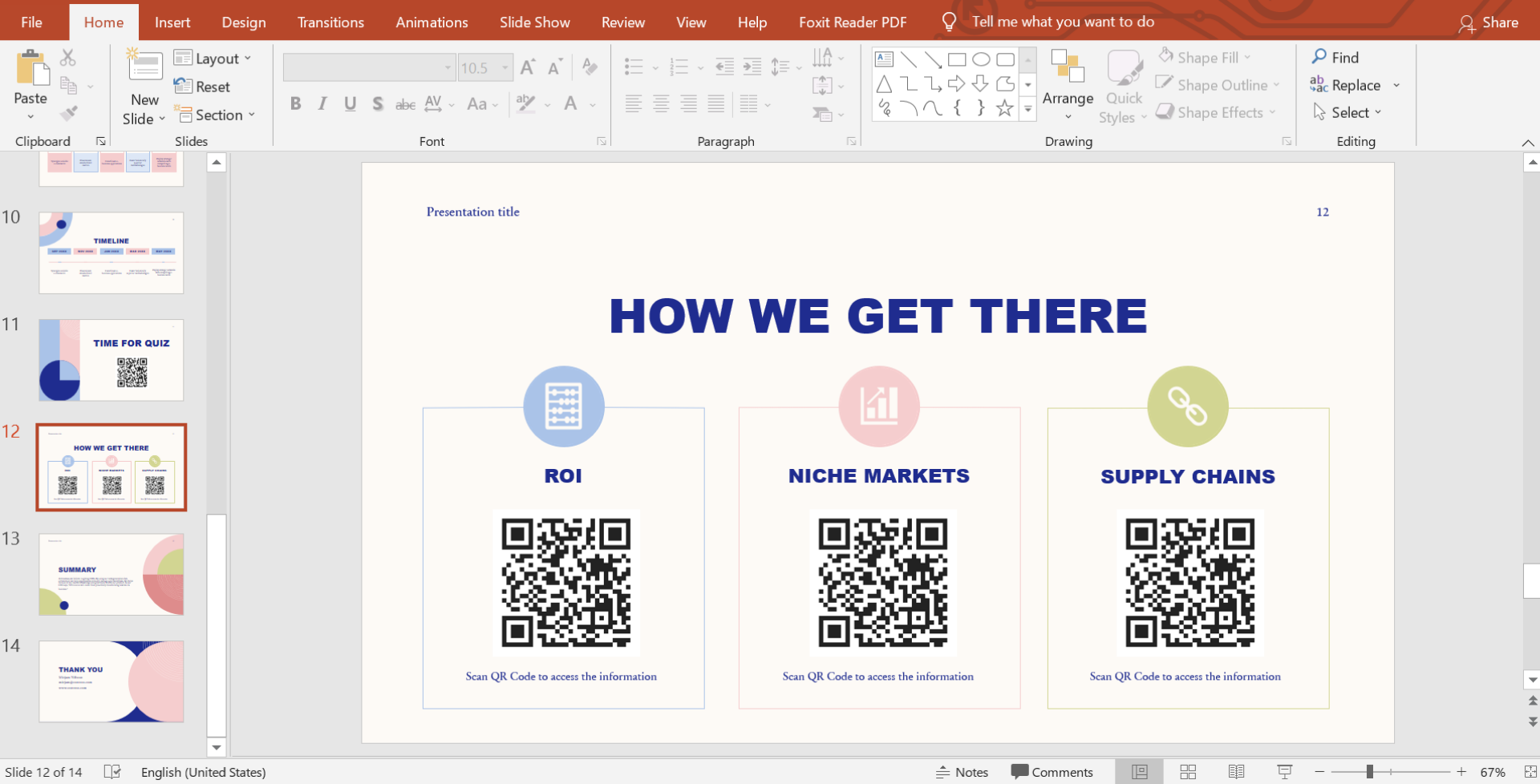
3. Time Savings
Integrating QR codes into your slides can help both you and your audience save a significant amount of time.
A QR code you create can be stored and used indefinitely, attached to this slide, many subsequent slides, and shared on your blog or other media channels. It's both synchronized and optimized, resulting in time savings.
How to Integrate QR Codes into Slides
1. Download Files
Add QR codes to specific slides to allow the audience to access supplementary documents. This ensures that your presentation remains concise while providing the necessary information to the audience.
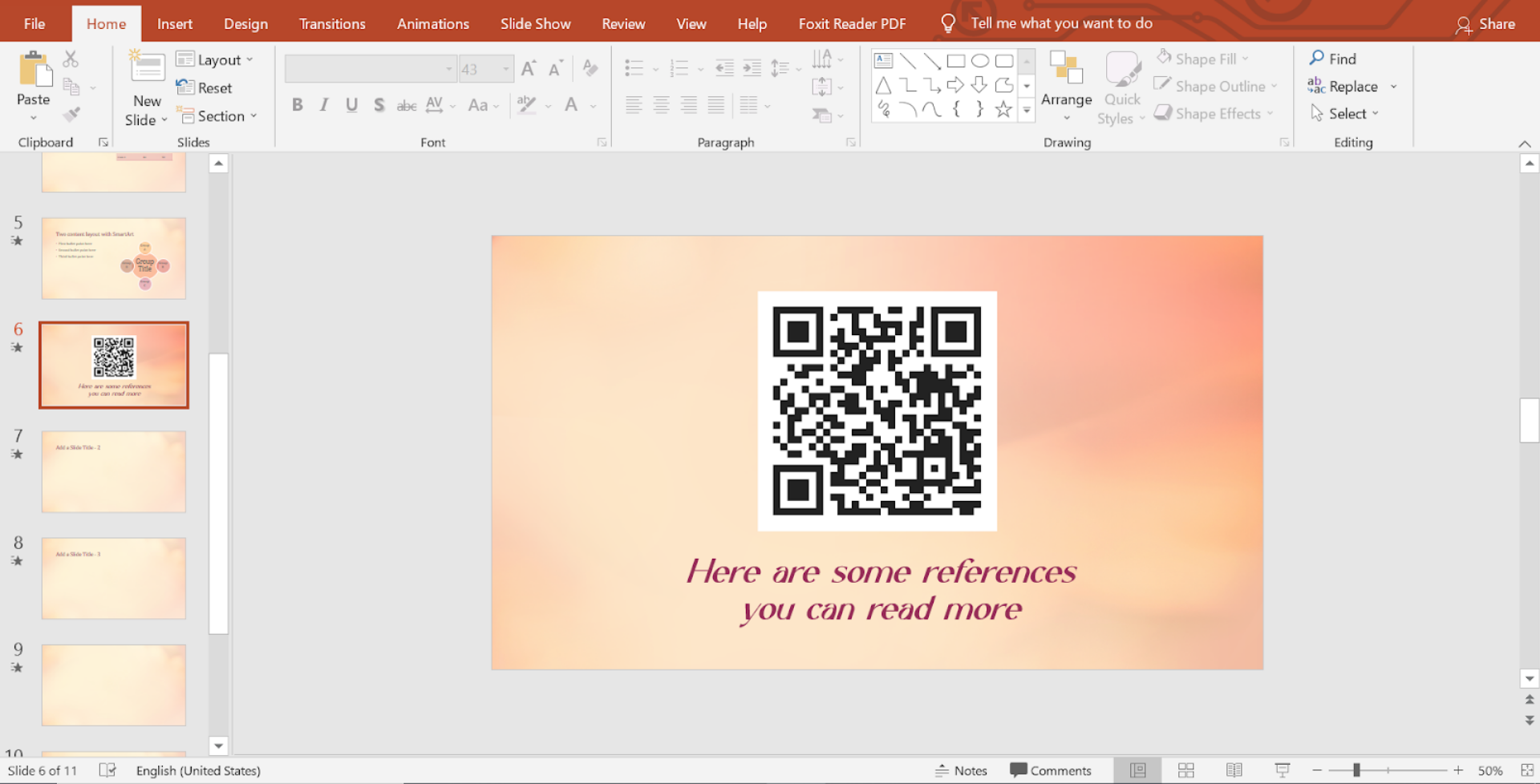
2. Annotating Information
Include QR codes in your slides to link to interactive content such as images, videos, or relevant narratives. This makes it easier for remote participants to follow your content.
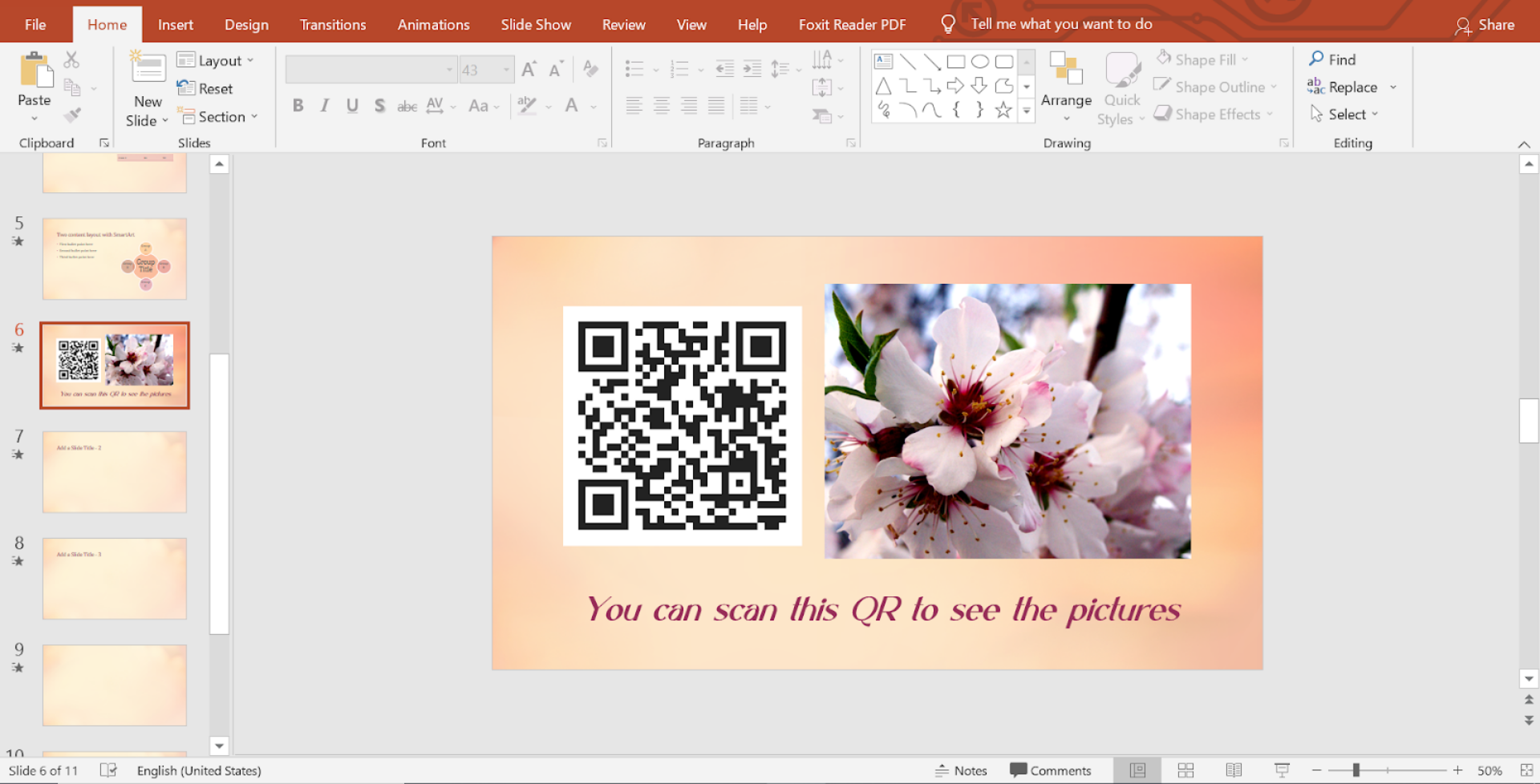
3. Enhancing Interaction
Allow QR codes to lead to online survey platforms or create questions for your audience to scan QR codes and answer immediately. This will make your presentation more engaging.
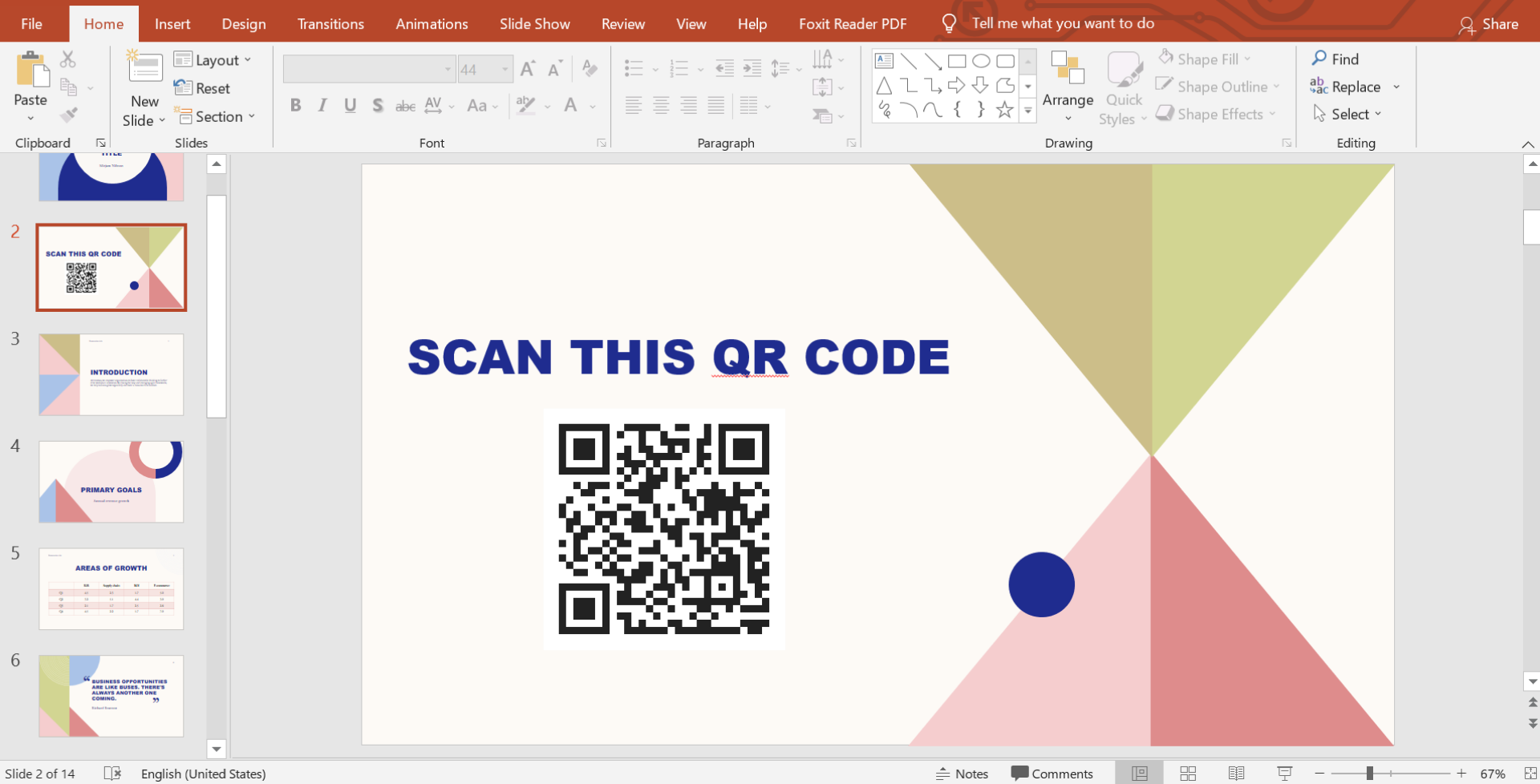
4. Connecting with the Audience
You can easily connect with your audience by using QR codes that lead to your social media platforms. This way, they can effortlessly connect with you after the presentation, making the process more convenient.
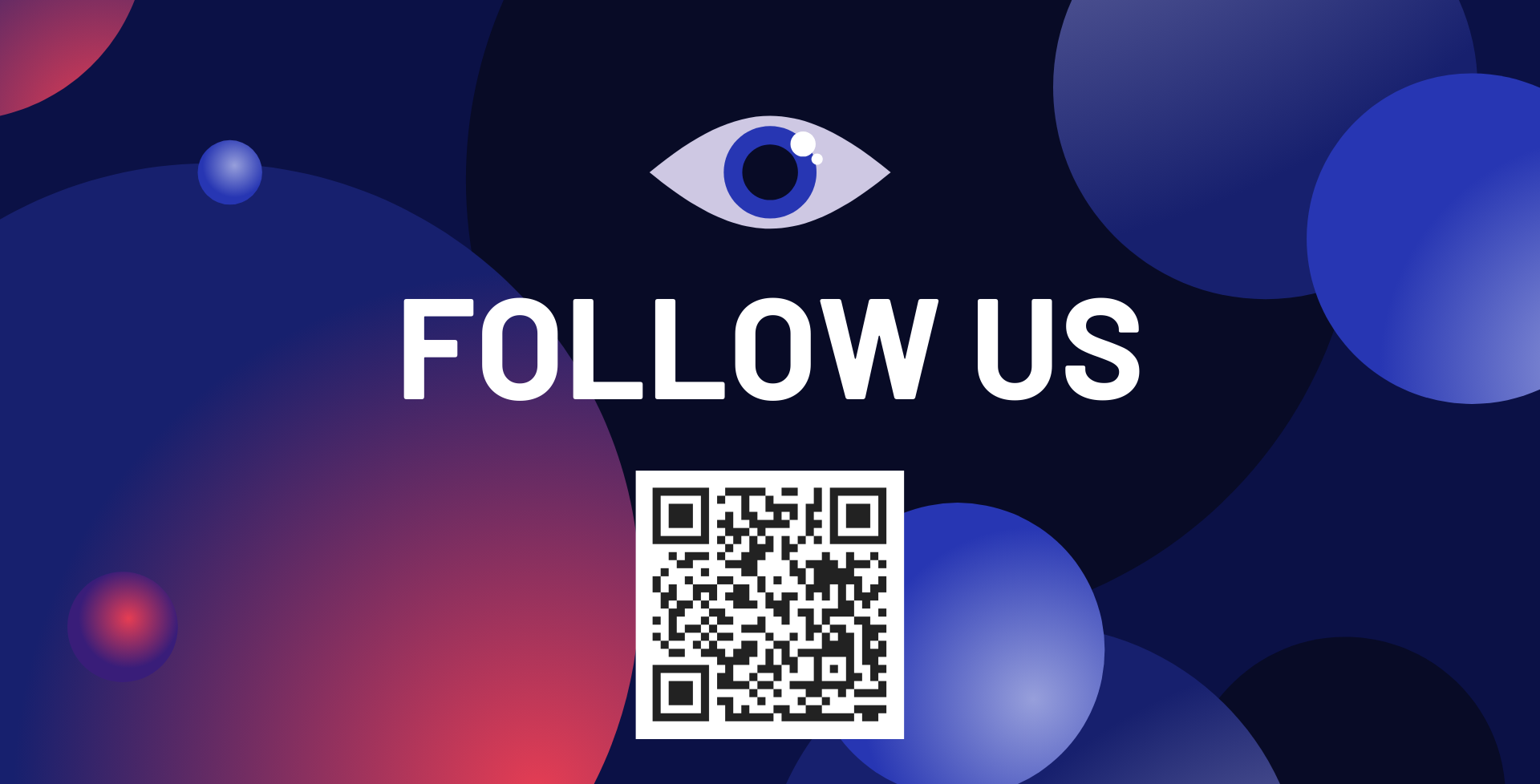
5. Collecting Feedback
At the end of your presentation, consider adding a QR code that links to a Google Form where you can gather feedback from your audience about the presentation you've just delivered. This way, you can enhance interaction with your audience and quickly collect their opinions.

How to Use QR Codes in Slides
1. Create a QR Code
First, you need to create a QR code corresponding to the content you want to share. There are many free online tools that make it easy to generate QR codes, such as CourseMind, QR Generator, Me QR, etc.
2. Insert the QR Code into the Slide
Once you have the QR code, you can insert it into your Google Slide. Use the "Image" feature within Slide to add the QR code to any slide you desire.
- Attach reference documents
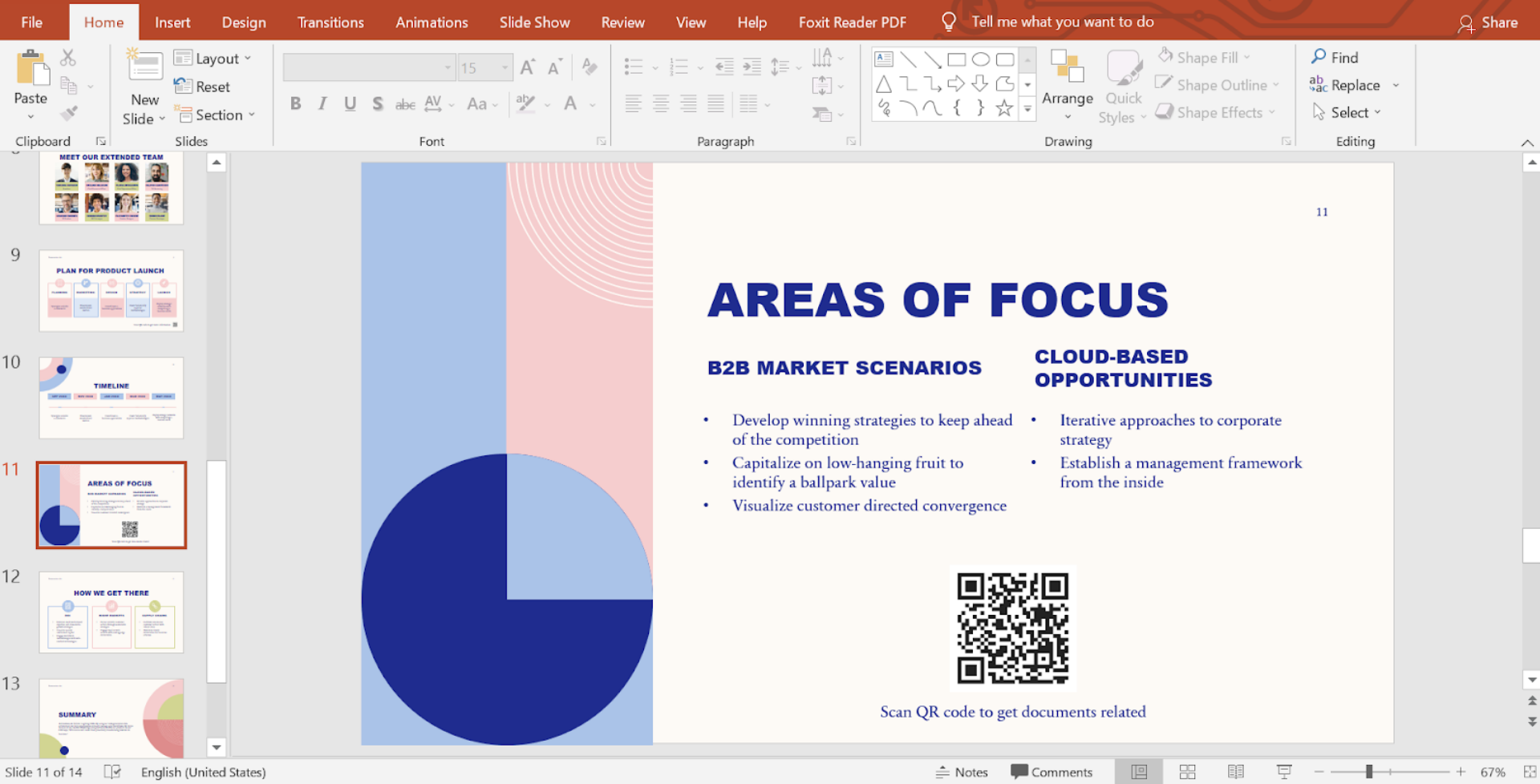
- Annotating Information
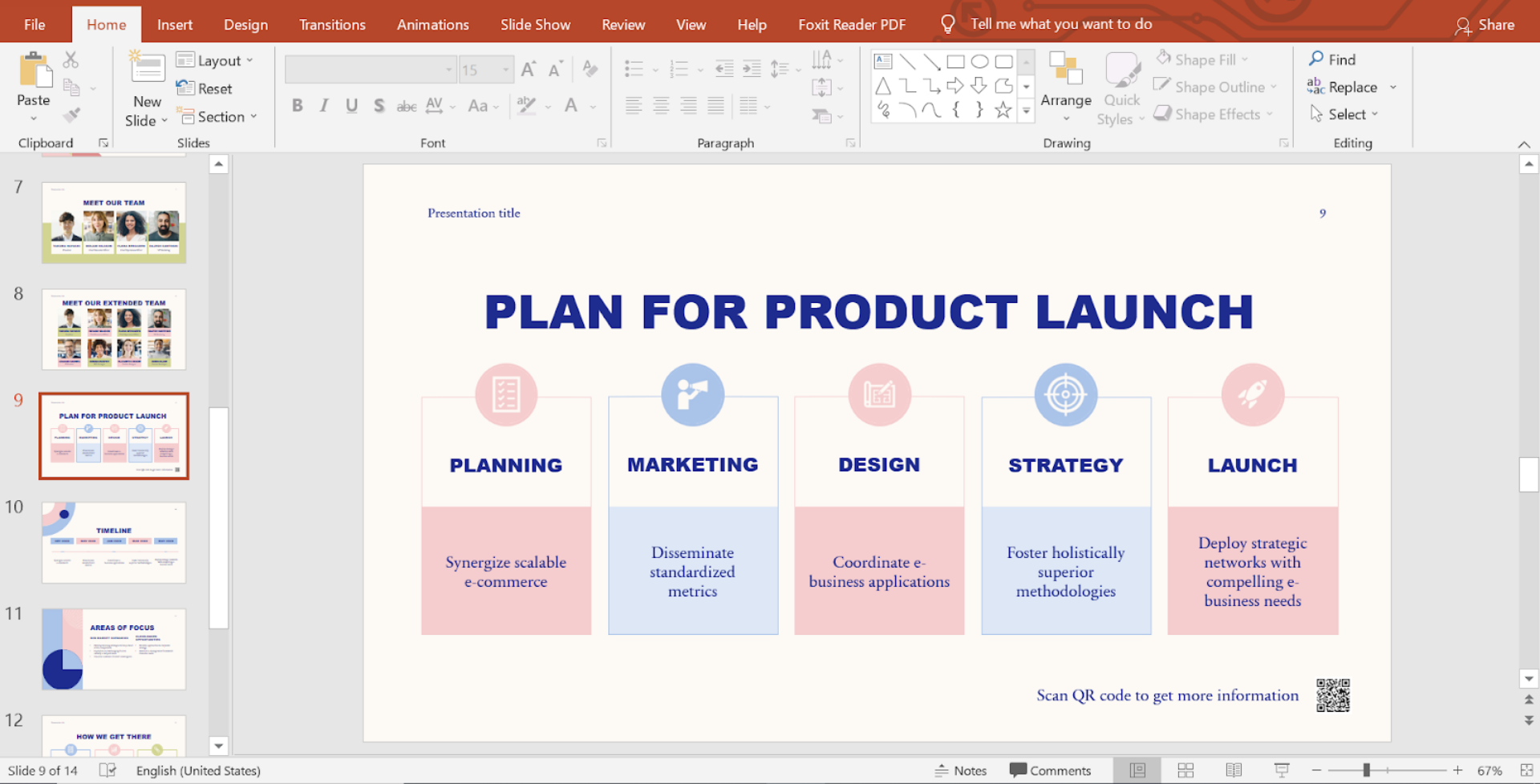
- Online Survey Link
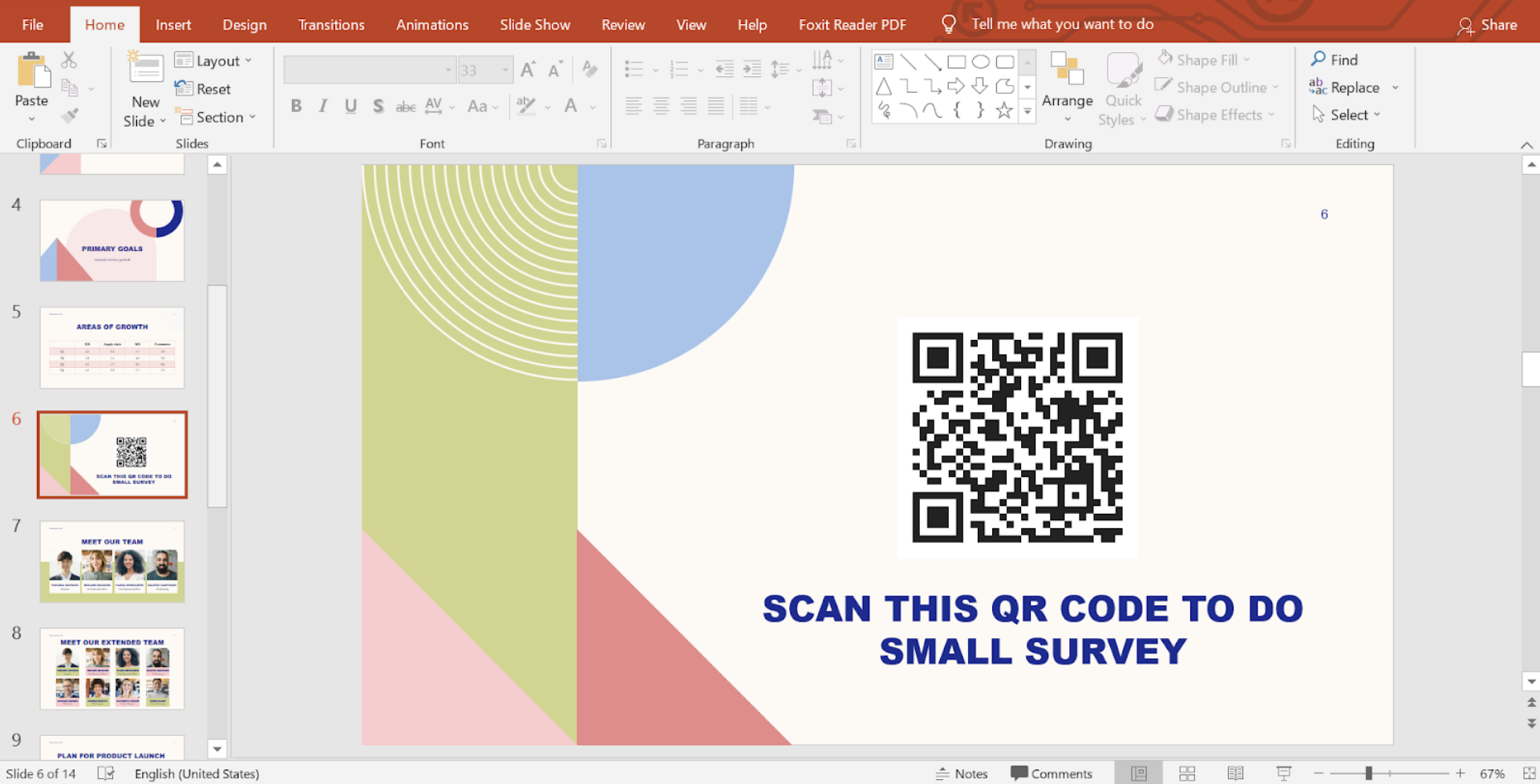
- Gathering Feedback
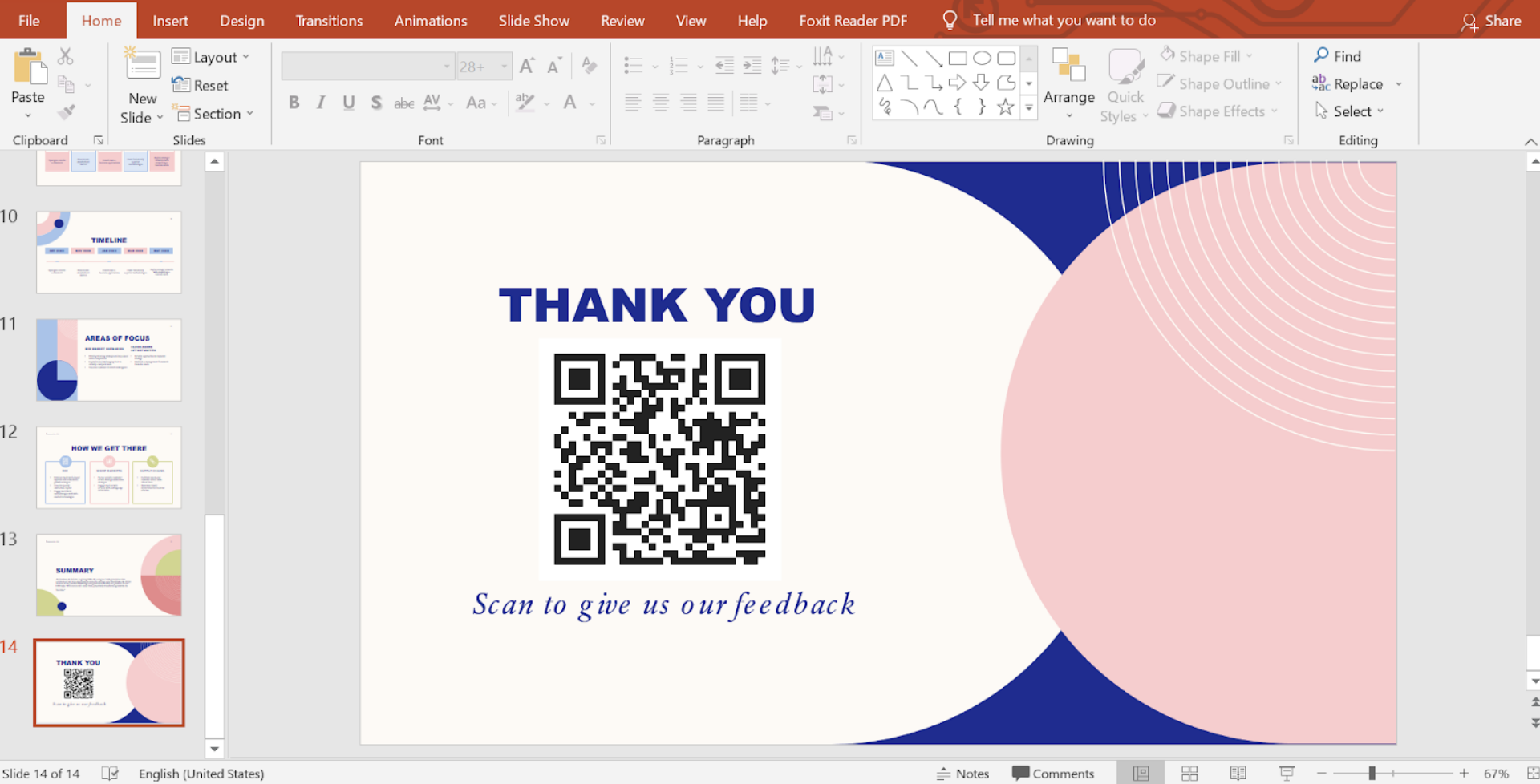
3. Add Instructions
Don't forget to include instructions for the audience on how to use the QR code. This can be a reminder on the slide or a motivating question encouraging their participation.
Procedures for Generating a QR Code for a Slide Using CourseMind
- Access https://coursemind.io/qr-gen
.png)
- Enter the URL you wish to convert into a QR code.
.png)
- Choose the display styles for the QR code to suit your preferences.
.png)
- Upload a logo and select colors according to your preferences.
.png)
- Download your QR code
Click 'Save Image' to automatically save the QR code you have just generated.
Why Choose CourseMind?
CourseMind QR Generator is the perfect choice for you because it offers all the features you need, including logo insertion, color customization, and frame selection for your QR code, along with the following five advantages:
- No registration or login required.
- No fees or costs involved.
- No time limits for storage.
- No advertisements.
- No restrictions on the number of QR codes you can create.
In conclusion, by following a series of simple steps, one can effortlessly create a QR code and seamlessly integrate it into their presentation slides, resulting in a distinct impression and heightened interaction. Try it now!